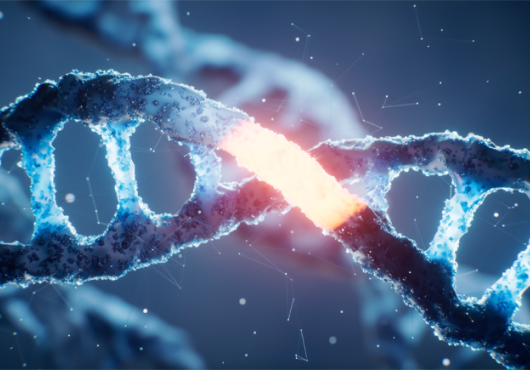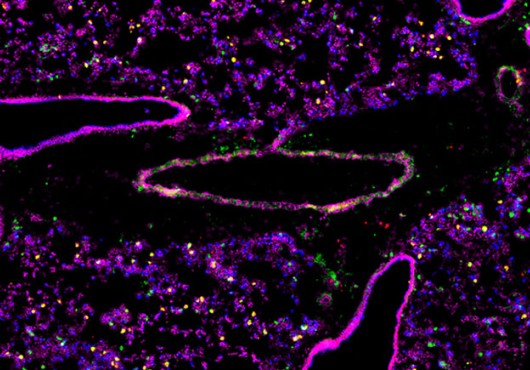HMS researchers have analyzed the regulatory involvement of over 400 microRNAs (miRNAs) associated with muscular disorders in an effort to shed light on the pathogenesis of these conditions.
Their microarray research implicated 185 dysregulated miRNAs in the development of 10 muscular disorders in humans, as reported in the Oct. 23 Proceedings of the National Academy of Sciences. Senior author Louis Kunkel, HMS professor of pediatrics at Children’s Hospital Boston, and lead author Iris Eisenberg, an HMS research fellow in pediatrics, compared miRNA expression patterns in 80 muscle specimens from patients with muscular dystrophies and myopathies.
Of the 185 miRNAs, a total of 151 were upregulated, 28 were downregulated, and six were expressed in an inconsistent pattern across disorders. Five were dysregulated in all samples and may provide clues about an underlying regulatory pathway in these disorders.
When the single-stranded rogue miRNAs were either up- or down-regulated, they interfered with messenger RNA expression and acted as negative regulators, with an inverse correlation between miRNA expression and gene expression.
Duchenne muscular dystrophy (DMD) and Miyoshi myopathy had the strongest functional correlations with this mRNA and miRNA seesaw effect. The researchers identified 57 mRNA and miRNA interactions in DMD.
Some of the muscle disorders were associated with exclusively dysregulated miRNAs, pointing to a distinctive regulatory mechanism in particular cases. DMD—whose mutant gene Kunkel was the first to isolate, in 1986—had 62 dysregulated miRNAs, 14 that were solely dysregulated in this phenotype. Other uniquely dysregulated miRNAs showed up in disorders like limb girdle muscular dystrophy and facioscapulohumeral muscular dystrophy (FSHD), suggesting a unique role of miRNAs in the pathology of muscular disorders. A subgroup of 18 dysregulated miRNAs gave researchers enough evidence to distinguish between specific diseases and controls.
Some unexpected miRNAs also cropped up in the microarrays. Eleven previously identified as related to immunity were dysregulated. “In normal muscle, you don’t see any of these inflammatory cells,” Kunkel said. The findings were consistent with the observation of elevated levels of immune cells and inflammatory cytokines in the extracellular environment around dystrophic muscle.
Eisenberg hopes that miRNAs will give researchers alternative therapeutic targets. Two promising therapies for muscular disorders exist: one replaces the defective gene with a normal one using virus vectors; the other induces exon skipping of a mutation-containing exon to produce a frame shift and a smaller but functional protein. Beyond these, there is only palliative and symptomatic relief for patients.
Said Kunkel, “If you had a microRNA that targeted very specific mRNA, its up- or down-regulation could influence their gene expression; you could influence a whole pathway by just targeting one microRNA.”
Dysregulated MicroRNAs Linked to Muscular Disorders
Stay Up to Date
© 2025 by The President and Fellows of Harvard College


